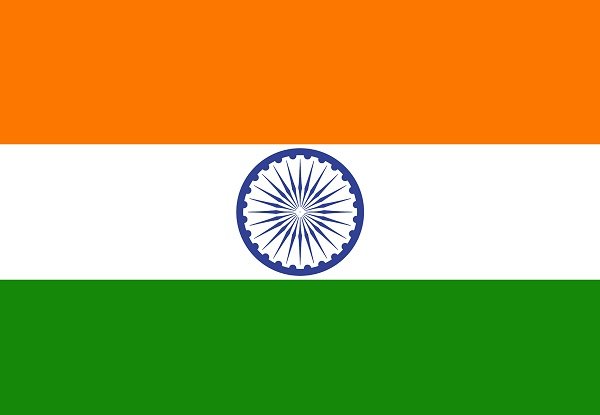Seeing the Indian National Flag swaying in all its glory makes every Indian feel extremely proud. The patriotic feeling that you get when you see the flag fluttering and the national anthem playing at the same time is just beyond compare. The three colors of the Indian national flag have some significance.
Here are a few facts about the Indian national flag that you probably never knew.

10. The Evolution
While all of us are familiar with the tricolor we see hoisted on Independence Day and Republic day in India, this is not how the Indian flag always looked. The flag have changed since 1906 when it was first designed to what it currently looks like. The ‘Tiranga’ as it’s commonly known was first hoisted in Parsee Square which is in Kolkata. At that time the flag has red, green and yellow as its colors and had the words ‘Vande Matram’ written on it. From that day to 1947, a lot of changes have been made to the flag. The tricolor, which was suggested by Mahatma Gandhi represents a lot about the country.
9. The Significance
The Indian national flag initially had three colors which were red, green and white. Red represented all the Hindus, Green the Muslims and White all the other communities. It was later changed to saffron, green and white and as of now saffron represents courage and sacrifice, white represents truth and purity and green represents prosperity. The ‘Chakra’ or the spinning wheel placed at the centre of the flag represents progress in the nation. Some people state it represents the Laws of Dharma.
8. The Material
The material used to make the Indian national flag is traditionally khadi. Although there are many variants of the flag such as paper, plastic, silk, etc., this is not the original material that it is supposed to be made of. The Indian national flag is supposed to be made of khadi as an honor to Mahatma Gandhi, who made this material popular.
7. Largest Flag
The largest Indian national flag that is hoisted every year is a massive 21 x 14 feet flag. This massive flag is neither hoisted at the Rashtrapati Bhawan or by the Indian Army. This flag is hoisted at the Mantralaya located in Mumbai. The Mantralaya is the headquarters for the state administrators and you can see this massive flag atop this building.
6. Manufacturing The Flag
While you get plastic or paper flags that you can pin to your clothes or hold in your hand during Republic Day or Independence Day celebrations, the cloth flags are not made by just any random tailor. There is a licensed body in India who handles all the flag manufacturing in India for the national flag. The unit is in Karnataka and is known as ‘Karnataka Khadi Gramodyoga Samyukta Sangha’.
5. Flag Dimensions
The Indian national flag has predetermined ratio that needs to be adhered to. As per the code that is set aside for the flag, it needs to have a ratio of 2:3. The length of the flag should be 1.5 times the width of it. All three stripes need to be equal in length and breadth.
4. Positioning The Flag
If you see the Indian flag during any public gathering or meeting, it will always be placed to the right of the speaker. The audience present will thus see the flag to the left. The flag to the right displays authority and respect.
3. Right To Hoist
Today the Indian national flag can be hoisted by anyone irrespective of their status in society. However all of this would not be possible if it weren’t for Naveen Jindal. The earlier flag code did not permit private citizens to hoist the Indian national flag. Private citizens were only permitted to hoist the Indian national flag on Independence Day or Republic Day. In 2001, industrialist Naveen Jindal decided to appeal against this code in the Delhi High Court. His argument stated that every citizen had the right to hoist the Indian national flag to be able to express their love for this amazing country. The Union Cabinet of India upheld his argument and amended the code of the Indian National Flag in 2002. This amended code gives all citizens the liberty to hoist the flag provided it is done with honor and respect for the flag.
2. Flag In Space
The Indian national flag has also completed its first trip to space. This happened in 1971 aboard the Apollo 15. The second trip to space for the Indian National flag was in the form of a medallion on the spacesuit of the Wing Commander Rakesh Sharma in 1984.
1. The Indian Flag On Clothing
Until recently the Indian National flag was not allowed to be used on costumes or any other clothing. It was only after the amendment of the code in 2005 that the Indian National flag was allowed to be used on certain forms of clothing. The new code states that the Indian national flag can appear only above the waist on any clothing. The flag cannot be embroidered in any form on pillowcases, handkerchiefs or dress materials.
It is one of the most beautiful flags in the world.
Santosh Kumar is a Professional SEO and Blogger, With the help of this blog he is trying to share top 10 lists, facts, entertainment news from India and all around the world.
